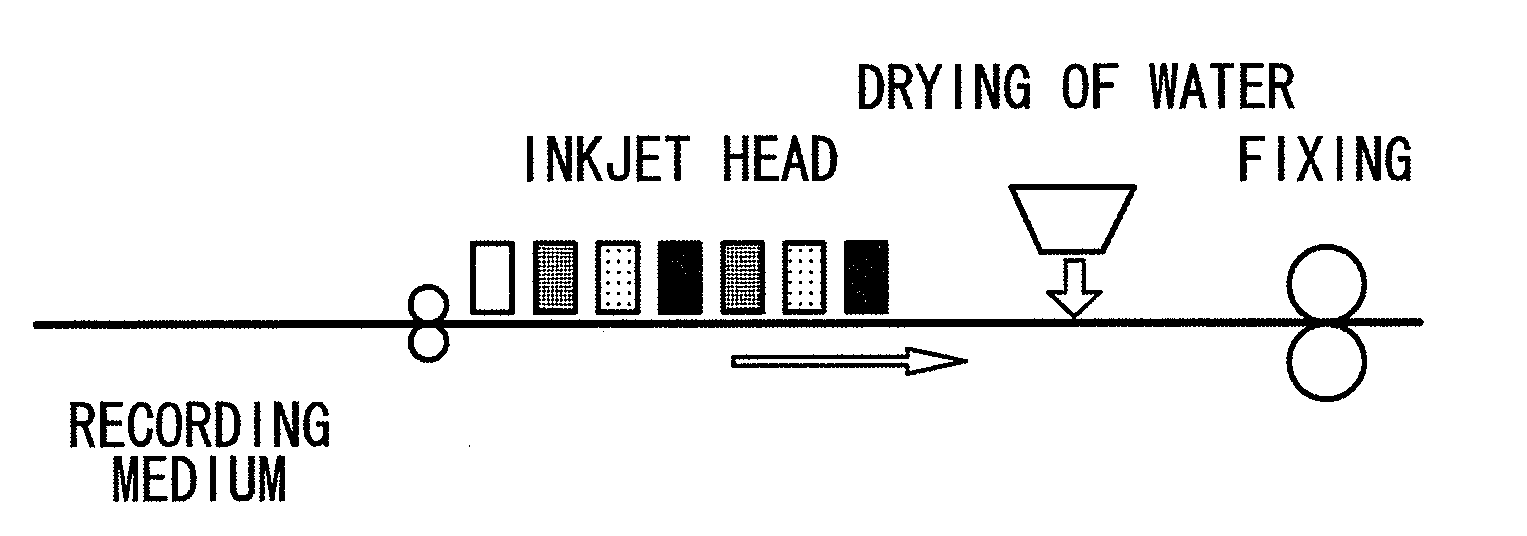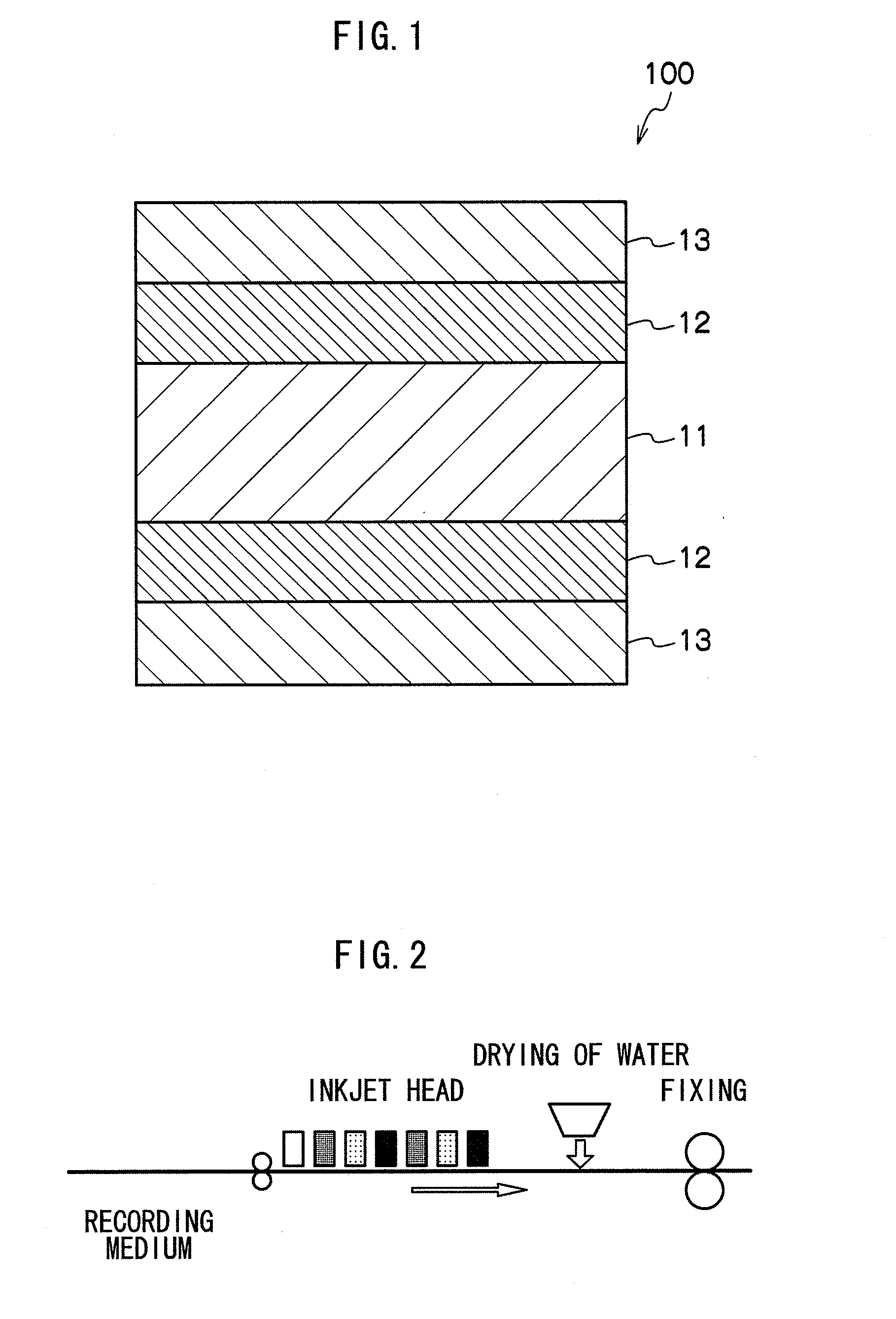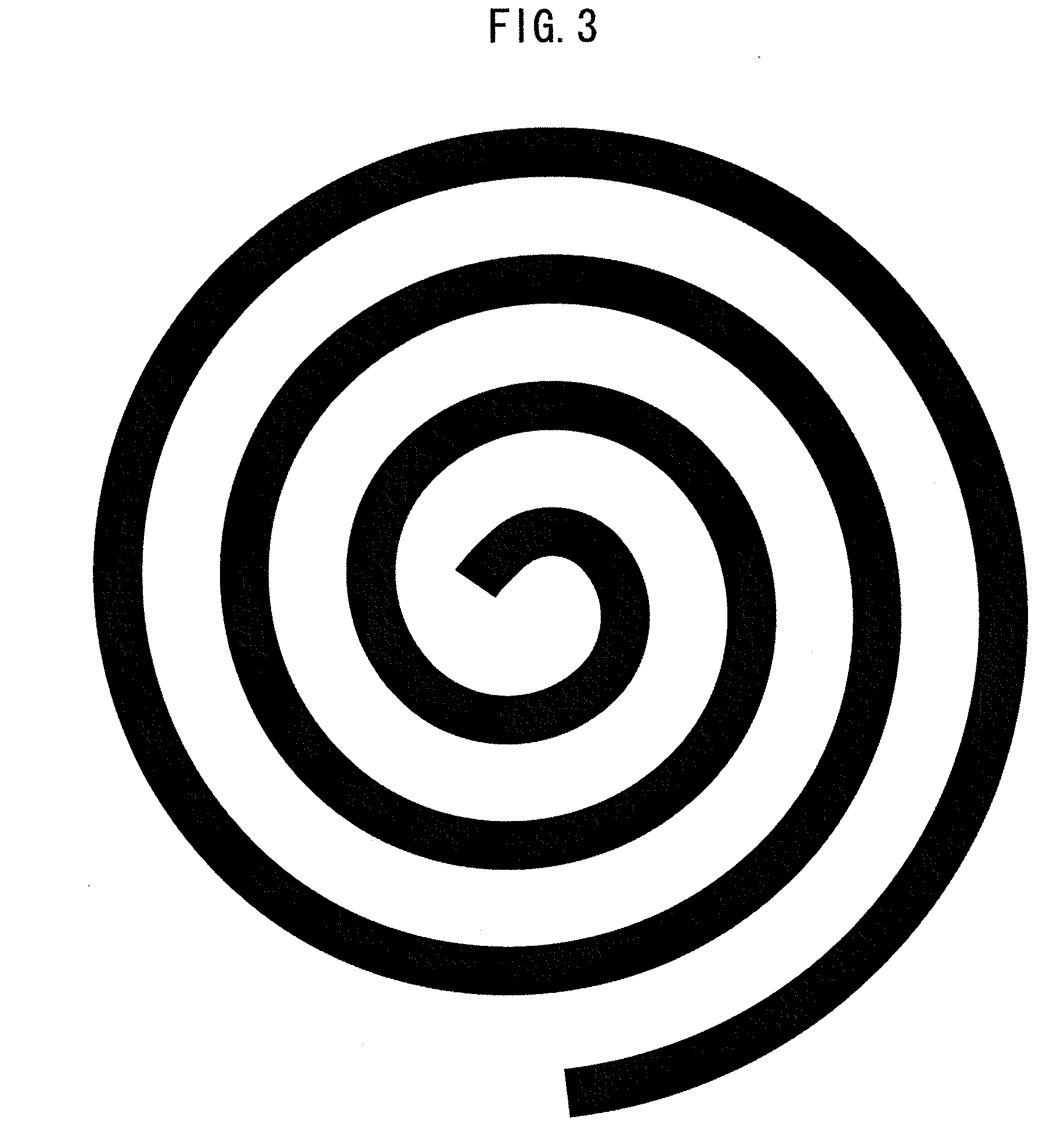Recording medium and manufacturing method thereof, and inkjet recording method
a technology of recording medium and manufacturing method, which is applied in the field of recording medium, can solve the problems of image bleeding and mixing between colors, large amount of ink per unit area on recording medium, and it is impossible for the solvent absorption layer to inhibit the permeation of ink solvent into the base paper
- Summary
- Abstract
- Description
- Claims
- Application Information
AI Technical Summary
Benefits of technology
Problems solved by technology
Method used
Image
Examples
example 1
—Preparation of Coating Liquid A for Formation of First Layer—
[0270]A 65% kaolin dispersion liquid was prepared by mixing 100 parts of kaolin (KAOBRITE 90, trade name, manufactured by SHIRAISHI CALCIUM KAISHA, LTD.), 3.8 parts of 0.1N sodium hydroxide (manufactured by Wako Pure Chemical Industries, Ltd.), 1.3 parts of 40% sodium polyacrylate (Aron T-50, trade name, manufactured by TOAGOSEI CO., LTD.) and 49.6 parts of water, and dispersing them by means of a non-bubbling kneader (NBK-2, trade name, made by NISSEI Corporation). Then, 5 parts of water, 7.0 parts of the 65% kaolin dispersion liquid obtained and 0.8 parts of 10% EMULGEN 109P (manufactured by Kao Corporation) were added to 100 parts of a 22.5% aqueous dispersion of polyester-based urethane latex (glass transition temperature: 49° C., minimum film-formation temperature: 29° C., trade name: HYDRAN AP-40F, manufactured by DIC Corporation), and mixed thoroughly by stirring. Thereafter, the mixed liquid obtained was kept in a...
examples 2 to 28
[0339]Inkjet recording media of Examples 2 to 28 were produced in the same manner as in Example 1 and evaluated by the same methods as in Example 1, except that the acid (hydrochloric acid) added to the coating liquid a for formation of the second layer in Example 1 was replaced with the acids listed in Table 1, respectively. Evaluation results obtained are shown in Table 1.
example 29
[0340]An inkjet recording medium of Example 29 was produced in the same manner as in Example 28, except that quinolinic acid was added in such an amount that the surface of the second layer of the inkjet recording medium was adjusted to pH 5.1, and evaluated by the same methods as in Example 28. Evaluation results obtained are shown in Table 1.
PUM
 Login to View More
Login to View More Abstract
Description
Claims
Application Information
 Login to View More
Login to View More - R&D
- Intellectual Property
- Life Sciences
- Materials
- Tech Scout
- Unparalleled Data Quality
- Higher Quality Content
- 60% Fewer Hallucinations
Browse by: Latest US Patents, China's latest patents, Technical Efficacy Thesaurus, Application Domain, Technology Topic, Popular Technical Reports.
© 2025 PatSnap. All rights reserved.Legal|Privacy policy|Modern Slavery Act Transparency Statement|Sitemap|About US| Contact US: help@patsnap.com



